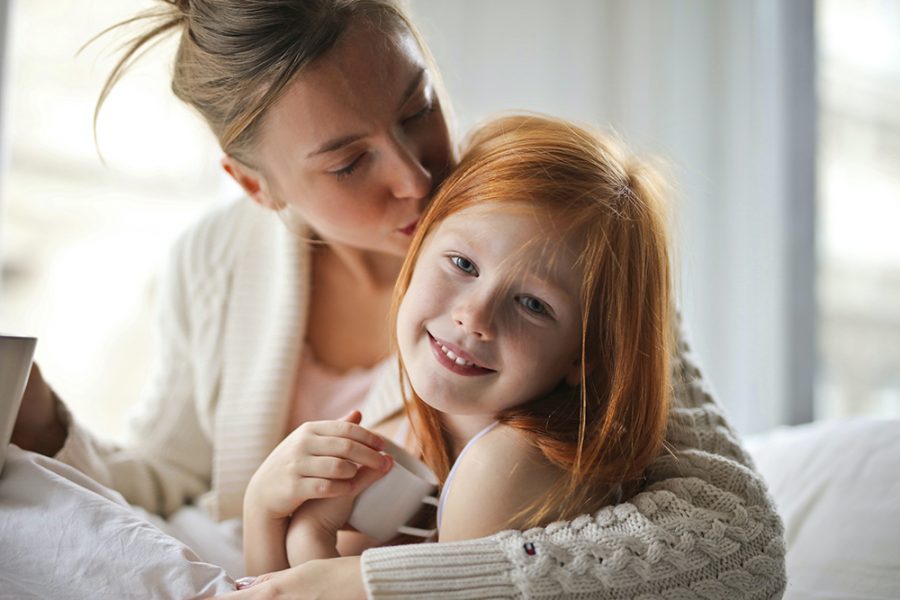
While there is currently no hard data accessible to fully understand the effects COVID-19 has on young children, researchers from the Florida State University Department of Psychology feel that children seem to be coping, on average, quite well during this time.
“There are major stressors that children are experiencing, such as the inability to attend school, adjusting to home school, being in the house with their family all day, not being able to see their friends, worrying about grandparents and loved ones — but they seem to be quite resilient and taking all of these changes in stride,” said Assistant Professor of Psychology Alexandria Meyer.
Meyer’s research explores how children have responded during widespread traumatic events, specifically focusing on Hurricane Sandy, which hit Long Island, New York, in 2012.

Her research suggests that children were impacted most when they had fearful symptoms from a young age, had a neural risk marker for anxiety and experienced increased levels of stressors such as damage to their home, financial hardship or difficulty getting food.
“What we do know from research is mostly based on other types of disasters, which may be shorter in duration and possibly higher in intensity (e.g., hurricanes, other natural disasters),” said Isaac Mirzadegan, a doctoral student in clinical psychology who works with Meyer. “We know less about slow-onset disasters with possible chronic risks, such as pandemics, drought or climate change.”
Meyer said that children who did not previously suffer from anxiety or fear-related issues are most likely not going to experience clinically significant increases in symptoms in the context of COVID-19.
To lessen anxiety in children during this time, Meyer suggests limiting your child’s exposure to the news and media related to COVID-19, having open conversations with your child regularly about their understanding of COVID and doing a reality check on their understanding of the facts.
“You should encourage your child to discuss their worries with you openly and to do mindfulness or breathing practices to calm their body down,” she said. “They can use apps like Headspace. Playing outside and taking walks can also help calm down anxious children — and adults!”
Mirzadegan said that younger children may be less able to articulate their distress.
“It is normal for children to express stress and anxiety through behaviors instead of through words (e.g., clinginess, sleep difficulties, irritability and temper tantrums, aggressive behavior, hyperactivity and separation anxiety), and parents might see an uptick in behavioral problems during this time,” he said. “Younger children may also need more physical affection to help reduce their distress.”
He explained that “middle children,” ages 5-12, might show more fear, anxiety and somatic complaints, such as stomachaches or headaches. In response to stress, they may be more likely to get in squabbles with siblings and experience school performance difficulty and social withdrawal. Older children — adolescents and teens — might experience more concentration difficulties, rebellious or risky behavior or a change in activity levels. They also might be more in need of a supportive environment to talk about how they feel.

In general, teens process traumatic events in a way that is more like adults. They are more likely to read and watch the news and have complex worries compared to young children.
According to both Meyer and Mirzadegan, children gather a lot of information about how to react to situations from watching their parents.
“Parents modeling healthy coping strategies for their children is going to be so important at this time,” Mirzadegan said. “Parents can focus on sharing actionable information, such as when and how to wear face masks and how to practice social distancing, rather than stress-inducing information like the number of COVID-related deaths or the names of celebrities who test positive.”
Parents can also encourage a “problem-solving” style of coping. They should help children to focus on things they can control.
Here are some parenting tips and tricks provided by Meyer and Mirzadegan:
Stick to your daily routine
It is important to establish consistent sleep-wake times, consistent mealtimes and consistent times for schoolwork or housework. Children should also be given as much responsibility as is reasonable for managing their own schedule, as this will help to support children’s sense of control and normalcy.
Encourage imagination
Children may experience more boredom during this time. The antidote to boredom is imagination and creativity. If a child complains of boredom, parents can encourage the child to develop a list of activities to do when bored — making sure to include some activities aside from screen time or video games — and reward the child for flexible and creative thinking.
Parents should make sure to encourage their children’s boredom-solving efforts and independent play, especially if this type of thing doesn’t come as naturally to a child. Kids who get lots of opportunities to practice flexing their boredom-solving muscle during the pandemic may benefit in the long run.
Increase a sense of social connection and community
Prompt children to reach out to friends and faraway family members to set up phone or video conversations, or to write letters. With help from parents, children can develop their communication skills, planning skills and social skills during this extended time at home by having an active hand in connecting with friends and family.
Give children active helping roles
Children can help parents sew face masks or write thank-you letters to front-line healthcare workers. Many children respond well to “gamified” support roles like this, and it may help them develop more community-mindedness.
Set up reward system
Parents might consider setting up a simple reward system with children for completing small household chores and contributing to the family. Children may have a lot of extra free time to offer their unique skills and insights, and parents can support children’s helping and volunteer efforts both within the household, and in the community at large.




